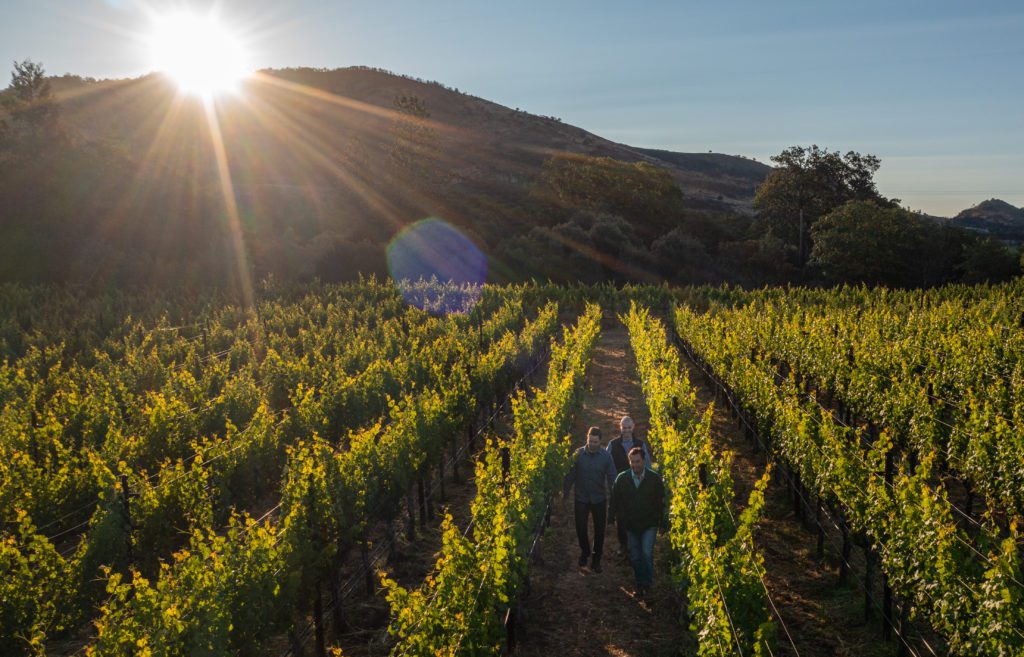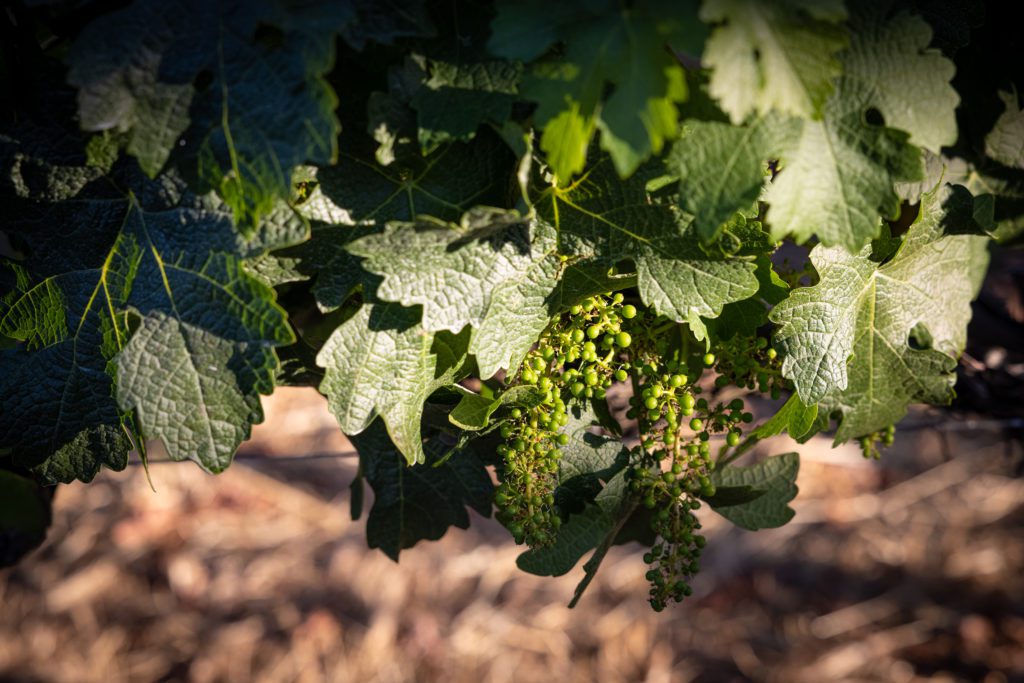Vol 11: The Upper Echelon of Vineyards
“Each day I wake up with the goal to make the best wine Mother Nature affords us, and with Seven Apart, the sky’s the limit.”
~ Andy Erickson, Seven Apart Winemaker

The Journal | Vol. 11
When Seven Apart founder Don Dady first set out to locate the right piece of land to craft world-class Cabernet Sauvignon, he started with the vineyard. And not just any vineyard: but the vineyard with the best possible location in Napa Valley.
His search eventually led him to Stags Ridge Vineyard on Atlas Peak. Stags Ridge’s dense volcanic soils have a proven history of producing 100 point wines. But perhaps the most important factor about this exceptional vineyard is its prized location.
Wine lovers and critics consider high altitude vineyards to be in the upper echelon of the winemaking world. At 1,475 feet up in the air, Stags Ridge Vineyard sits at one of the highest elevations in Napa. From Austria’s Steiermark mountain-grown Chardonnay to the red wines of Sicily’s Mount Etna, it’s no secret that elevation has a significant impact on wine.
What Difference Does Altitude Make to a Wine?
You may have come across the term ‘high-altitude vineyard’ on a label and considered it just another selling point. But the truth is, when it comes to vineyards, it’s all location, location, location.
Grapes grown at higher altitudes ripen differently from their counterparts further down. Many consider that the higher the vineyard, the better the fruit. This is because a high-altitude vineyard tends to enjoy more sun exposure and ventilation on the slope during the day. At night, the cooler temperatures slow down ripening and help preserve acidity. This all has a direct impact on the wine style, ripeness, freshness, and the development of flavor. The resulting high-altitude wines tend to be more elegant with complex flavors and attractive acidity, making them particularly sought-after.
Besides height, other elements of terroir like climate, soil, drainage, ventilation, and the magic touch of the winemaker all impact the outcome of the wine.
On Top of the World
Due to the tricky territory, traditionally high-altitude wines tend to cost more for wine drinkers. This is because it’s expensive to farm when accessibility is limited. Vineyards on steep hills cannot be cultivated by machine. Take, for example, Calmont vineyard located along the Mosel Valley in Germany. At a sharp 65 degree incline, Calmont is the steepest recorded vineyard in the world. A sightseeing landmark, the slope provides an ideal angle of solar radiation for the growth of Riesling. Harvesting here is no small feat. It takes up to 1,800 hours of manual work per hectare!
Conditions at high altitudes can also be challenging to work in. For example in Elqui, Chile, the vineyard is 6,500 feet above sea level! Not only are the vines isolated, but labor is hard to come by, and the sharp changes in temperature between day and night can be dangerous. The weather can quickly turn from a sunny day to an icy winter night.
Sicily’s Mount Etna is a wine-producing region that stretches to an elevation of around 4,000 feet, featuring some of Italy’s highest vineyards. It is also one of Italy’s tallest mountains and Europe’s largest active volcano. So active that in February 2021, the volcano erupted twice in one week! This proved great news for local vintners, who consider it good luck. After all, the volcanic soils are part of the reason for the region’s vinous success. The red wines from this area are so prized that they have been given their own term: ‘Etna Rosso/Red’.
All this said, despite dizzying inclines, extreme weather conditions, or the risk of volcanic eruptions, winemakers around the world continue to push winemaking to its extremes.

1,475 Feet Up in the Air
Our Stags Ridge Vineyard provides extreme mountain-grown Cabernet Sauvignon. The vines are above the fog line, meaning the vineyard gets morning sun. It also faces the Pritchard Gap where every afternoon, the vines enjoy a cool breeze that helps balance the sugar levels and acidity of the grapes. Perhaps most importantly, the drainage of the vineyard site is fantastic. In a special area like Atlas Peak, the rocky soils whisk rainfall away from grape roots. This means that the mountain fruit can’t easily access water, resulting in smaller berries with tight, concentrated flavor. The vines are also forced to grow deep into the earth in search for water and nutrients, creating an intricate and dense network of underground roots. Photos of Stags Ridge reveal the vineyards are lined with what looks like cobblestone alleys:
“There are giant rocks scattered throughout – some so large that we couldn’t install trellising into the ground!” shares founder Don Dady.
These strenuous growing circumstances reduce the overall yield of the grapes, but improve the overall quality of the fruit. Each surviving berry enjoys more character and is of a higher quality. Don describes the fruit as having “big, round tannins and a deep concentration of flavor.”
In 2013, Stags Ridge Vineyard produced the elusive unicorn that is the 100-point winning wine. With this knowledge, Don knew he was taking a calculated leap of faith when he purchased the vineyard in 2018.
It was this very vineyard’s exclusive location that also attracted winemaker Andy Erickson to come onboard, who shares:
“Seven Apart is a dream come true due to its unparalleled Stags Ridge Vineyard and the brand-new winemaking facility. Each day I wake up with the goal to make the best wine Mother Nature affords us, and with Seven Apart, the sky’s the limit. I was drawn to the team’s commitment to push the vineyard to its limits and to allow the grapes to shine.”
At Seven Apart, our high-altitude Stags Ridge vineyard offers us the perfect combination of low soil nutrients, extreme temperature variation, and harsh sunlight to result in grapes with darker skins, incredible structure, and bright acidity. We believe that we get out the work we put in, and this is the most elevated form of our expression.
